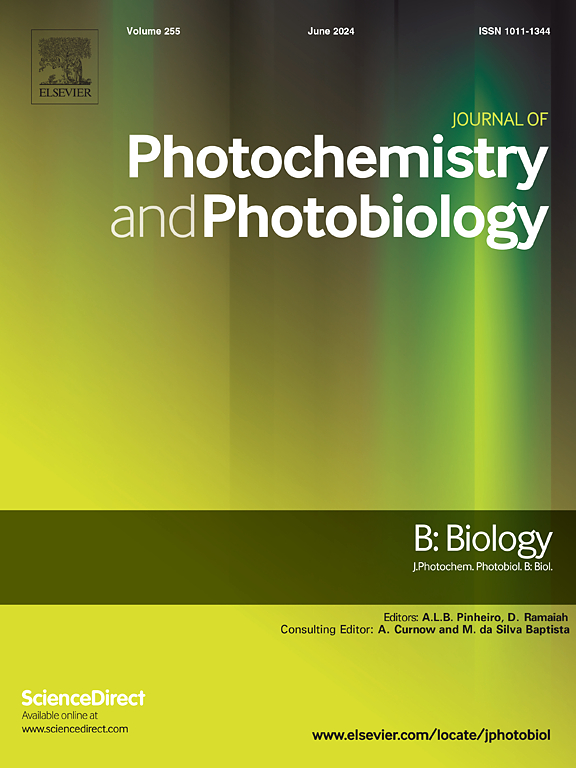Photobiomodulation therapy induces NG2 activation through dermal adipocyte lipolysis during wound healing
IF 3.7
2区 生物学
Q2 BIOCHEMISTRY & MOLECULAR BIOLOGY
Journal of photochemistry and photobiology. B, Biology
Pub Date : 2025-03-22
DOI:10.1016/j.jphotobiol.2025.113151
引用次数: 0
Abstract
Photobiomodulation therapy (PBMT) is a rapidly advancing approach for restoring damaged tissues, particularly in skin and mucosal wounds. While its application is promising, the role of mature adipocytes in regenerating mesenchymal tissues after PBMT remains largely unexplored. This study demonstrates that PBMT applied to skin wounds significantly reduces the number and size of mature adipocytes. Additionally, PBMT modulates the upregulation of peroxisome proliferator-activated receptor γ (PPARγ), increasing the gene expression of fatty acid binding protein 4 (Fabp4) and perilipin 1, which are linked to enhanced lipolysis. The molecular activation of neural/glial antigen 2 (NG2) indicates the recruitment of progenitor cells following mature adipocytes lipolysis. In vitro, PBMT improved dermal skin cell proliferation, migration, inflammatory regulation, and differentiation capacities. These findings reveal a novel mechanistic pathway for skin regeneration, emphasizing the therapeutic potential of PBMT in modulating dermal fat tissue to facilitate wound healing. Collectively, this emerging knowledge provides valuable insights into managing dermal fat tissue to support wound healing.

在伤口愈合过程中,光生物调节疗法通过皮肤脂肪细胞脂解诱导NG2活化
光生物调节疗法(PBMT)是一种快速发展的修复受损组织的方法,特别是在皮肤和粘膜伤口。虽然其应用前景广阔,但成熟脂肪细胞在PBMT后间充质组织再生中的作用仍未得到充分研究。本研究表明,应用于皮肤伤口的PBMT可显著减少成熟脂肪细胞的数量和大小。此外,PBMT调节过氧化物酶体增殖物激活受体γ (PPARγ)的上调,增加脂肪酸结合蛋白4 (Fabp4)和periilipin 1的基因表达,这与脂肪分解增强有关。神经/胶质抗原2 (NG2)的分子活化表明成熟脂肪细胞脂解后祖细胞的募集。在体外,PBMT可改善真皮皮肤细胞增殖、迁移、炎症调节和分化能力。这些发现揭示了一种新的皮肤再生机制途径,强调了PBMT在调节皮肤脂肪组织以促进伤口愈合方面的治疗潜力。总的来说,这些新兴的知识为管理皮肤脂肪组织以支持伤口愈合提供了有价值的见解。
本文章由计算机程序翻译,如有差异,请以英文原文为准。
求助全文
约1分钟内获得全文
求助全文
来源期刊
CiteScore
12.10
自引率
1.90%
发文量
161
审稿时长
37 days
期刊介绍:
The Journal of Photochemistry and Photobiology B: Biology provides a forum for the publication of papers relating to the various aspects of photobiology, as well as a means for communication in this multidisciplinary field.
The scope includes:
- Bioluminescence
- Chronobiology
- DNA repair
- Environmental photobiology
- Nanotechnology in photobiology
- Photocarcinogenesis
- Photochemistry of biomolecules
- Photodynamic therapy
- Photomedicine
- Photomorphogenesis
- Photomovement
- Photoreception
- Photosensitization
- Photosynthesis
- Phototechnology
- Spectroscopy of biological systems
- UV and visible radiation effects and vision.

 求助内容:
求助内容: 应助结果提醒方式:
应助结果提醒方式:


